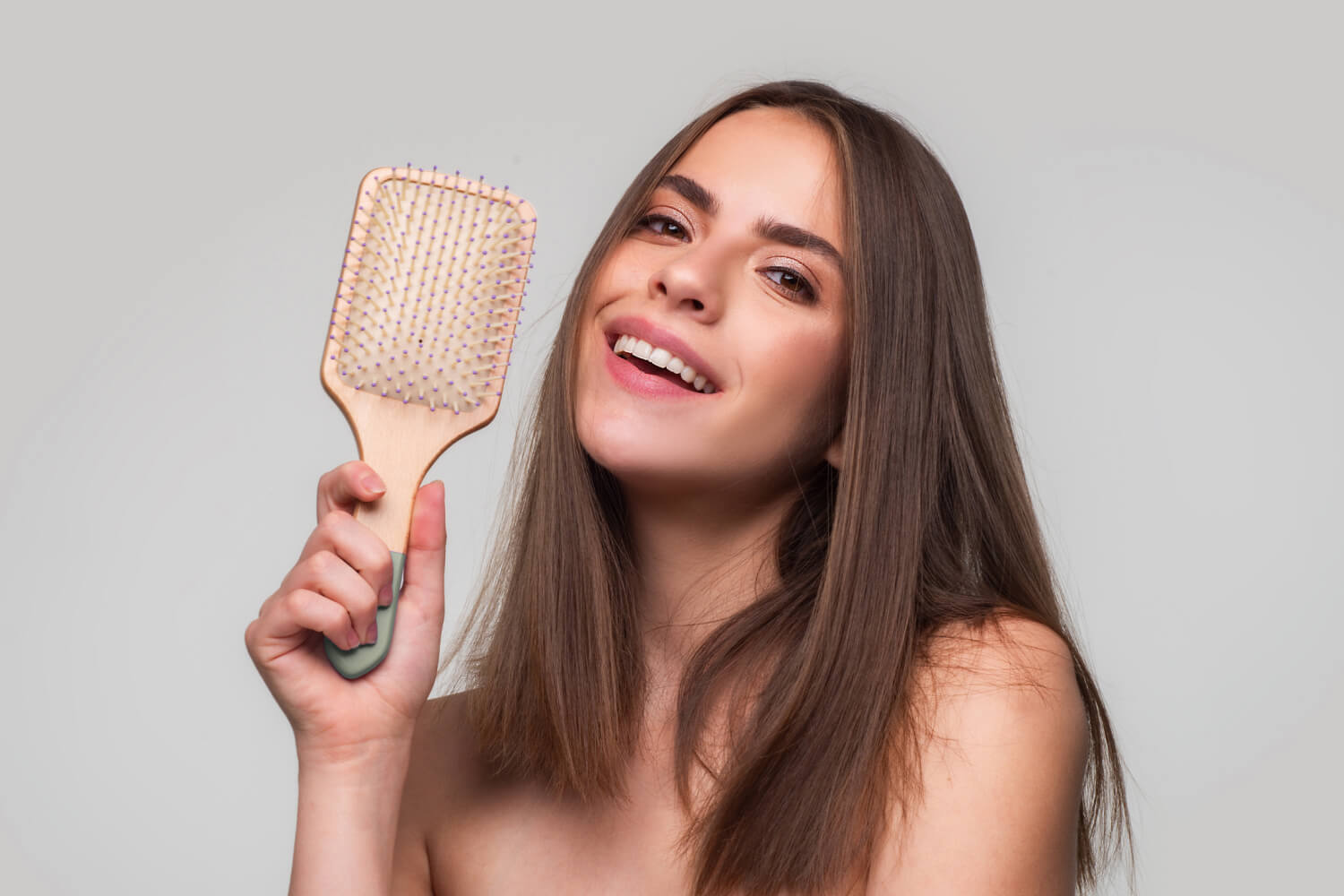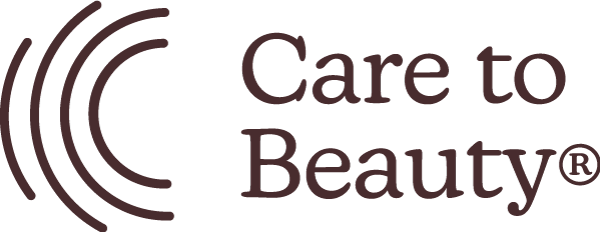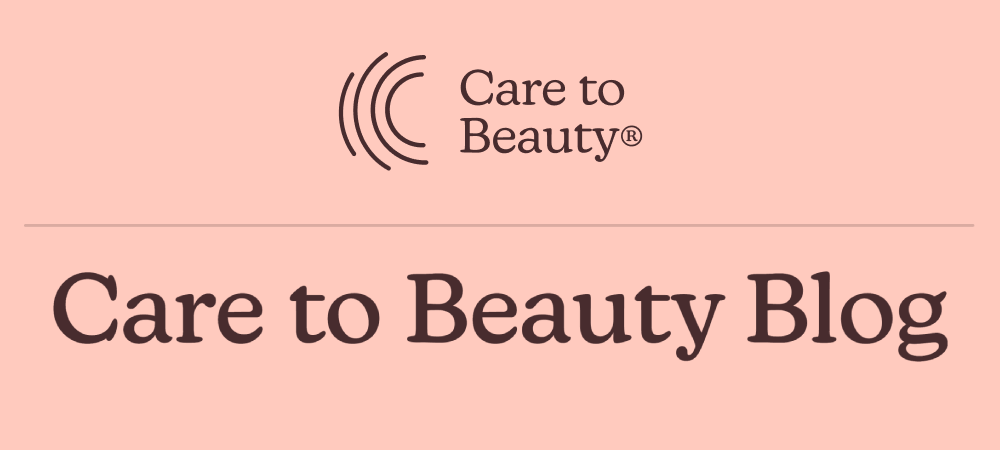
If you’re a beginner in the world of hair care, it can feel quite overwhelming to figure out where you should start building a hair care routine. How can you choose between the thousands of shampoos and conditioners on the market? And that’s without mentioning all the other products, such as masks, leave-in sprays, styling creams, and beyond. If taking care of your hair feels daunting but you’re determined to find your way through it, we’re here to help with some basic tips to get you started!
1. Learn when and how to wash your hair
Depending on your hair type, you may be washing your hair every day, every few days, or once a week. That’s fine! You can wash your hair when your scalp starts getting a little greasy, or when you feel like you need to give your locks a refresh. In addition to depending on your hair type, the need to wash your hair can also depend on the time of year and the activities you do during the day. Imagine running a marathon on a hot summer day, versus spending a cozy winter evening on the couch–the former is likely to leave your hair feeling much greasier!
If you can’t figure out the right hair washing schedule for you, try washing your hair every other day: that’s a pretty good compromise for a beginner’s hair care routine!
How to choose the right shampoo
Now that you know how often you want to be washing your hair, you’ll need to learn how to wash your hair. Let’s start by choosing the right shampoo.
It’s important to choose a shampoo suited to the needs of your scalp, rather than the needs of your hair. After all, shampoo is a cleansing product whose main job is to cleanse the roots of your hair, where oil, impurities, and product residue tend to build up.
If you wash your hair frequently and your scalp is healthy, invest in a “frequent use” shampoo–this should be enough to take care of your needs. If, on the contrary, you have an oily scalp, make sure to invest in a shampoo that’s more targeted to this type of concern.
How to wash your hair, for beginners
You already know how often to wash your hair and what shampoo to use, now it’s time to learn hair washing technique. Dispense some shampoo onto your hands, and then use your fingertips–not your nails!–to massage the shampoo into your scalp. Use gentle circular motions–you don’t have to apply a lot of pressure, nor do you have to rub the hair between your hands as you shampoo it. Focus on massaging your scalp until you’ve created a lather and then, if you want, you can slide some of that foam down the length of your hair. Remember: no rubbing!
And a final note on hair washing: use lukewarm water, neither too cold nor too hot!
2. Figure out your must-have hair products
As a beginner, what other hair care products do you need besides shampoo? Different people have different hair concerns, which will greatly influence their choice. Here are some ideas for basic hair care routine steps:
Shampoo + Conditioner
This is a pretty traditional hair care routine, which should suit most people’s needs. Pick a shampoo that matches your scalp needs, a conditioner to hydrate and nourish and hair, and get the whole routine done in the shower. Easy-peasy!
Shampoo + Conditioner + Mask once a week
If you have dry or damaged hair, this can be a good option. Use a shampoo and conditioner as you normally would, and then add a hair mask once or twice a week, depending on how dry your hair is.
Shampoo + Leave-in Conditioner
If you want to get in and out of the shower as quickly as possible, combine a shampoo with a leave-in conditioner. Apply your shampoo as usual, rinse, then step out of the shower. Apply your leave-in conditioner right before detangling your hair, and you’ll be good to go.
3. Dry your hair with care
Now that you’re an expert at washing your hair, you’ve already conquered one of the biggest difficulties that beginners experience when starting their hair care routine. Now you’ve got to learn how to dry it properly. When drying your hair, there are two main issues you want to avoid: friction and heat.
If you usually dry your hair with a towel, you should pay attention to the first issue: friction. To minimize friction on your hair, you can opt for a microfiber towel instead of a terrycloth towel. You can also adapt the technique you use to dry your hair: instead of wrapping your hair in the towel and rubbing it up and down, try using the towel to gently squeeze the water out of your hair, always moving in the same direction, from the roots to the ends.
If towel-drying isn’t enough, you have two options at your disposal: air drying, or blow drying your hair. Air drying may well be the least damaging way to dry your hair, and it’s also beginner-friendly–just remove excess water with a towel, and you’ll be good to go. If you’re short on time, or if you prefer to simply use a hairdryer, there are also ways to minimize heat damage–use your hairdryer on the lowest possible temperature, and make sure to apply a heat protecting spray before blow drying, just in case.
4. Avoid heat styling
Heat is one of your hair’s biggest enemies: from hair dryers to hair straighteners, from hot rollers to curling irons, there is a huge variety of devices and practices that expose your hair to heat damage.
The best way to minimize heat damage is, obviously, to avoid heat tools. If you can’t do so, there are options: use the lowest possible temperature that will still allow you to achieve your desired look, and use a heat protecting spray every single time.
5. Get regular haircuts
Apart from your home hair care routine, there is an aspect of hair care that may involve a trip to the hair salon: regular haircuts. If you have short hair, getting regular haircuts is the best possible way to keep your haircut looking tidy and true; if you have long hair, regular haircuts can help you keep split ends at bay.
Regular haircuts are also a powerful secret weapon against hair that tends to weaken at the ends. Often, as the hair begins to break off, it can start to look tired and thin around the ends. If you want to avoid this look, a regular haircut may be your best bet, as it will give the ends of your hair a thicker, blunter appearance.
Keep in mind, however, that regular haircuts won’t make your hair grow faster–that’s a myth. They may help create the appearance of a fuller head of hair, due to the “thickening” effect we’ve described, but they won’t boost hair growth in any way. Hair growth can only be boosted at the root, not the ends!
As a beginner, there’s a lot to learn about hair care, but these basic tips should be enough to get you started. When you’re ready to level up, we’ll have a whole set of advanced hair care tips prepared just for you!
Beauty Writer & Editor


